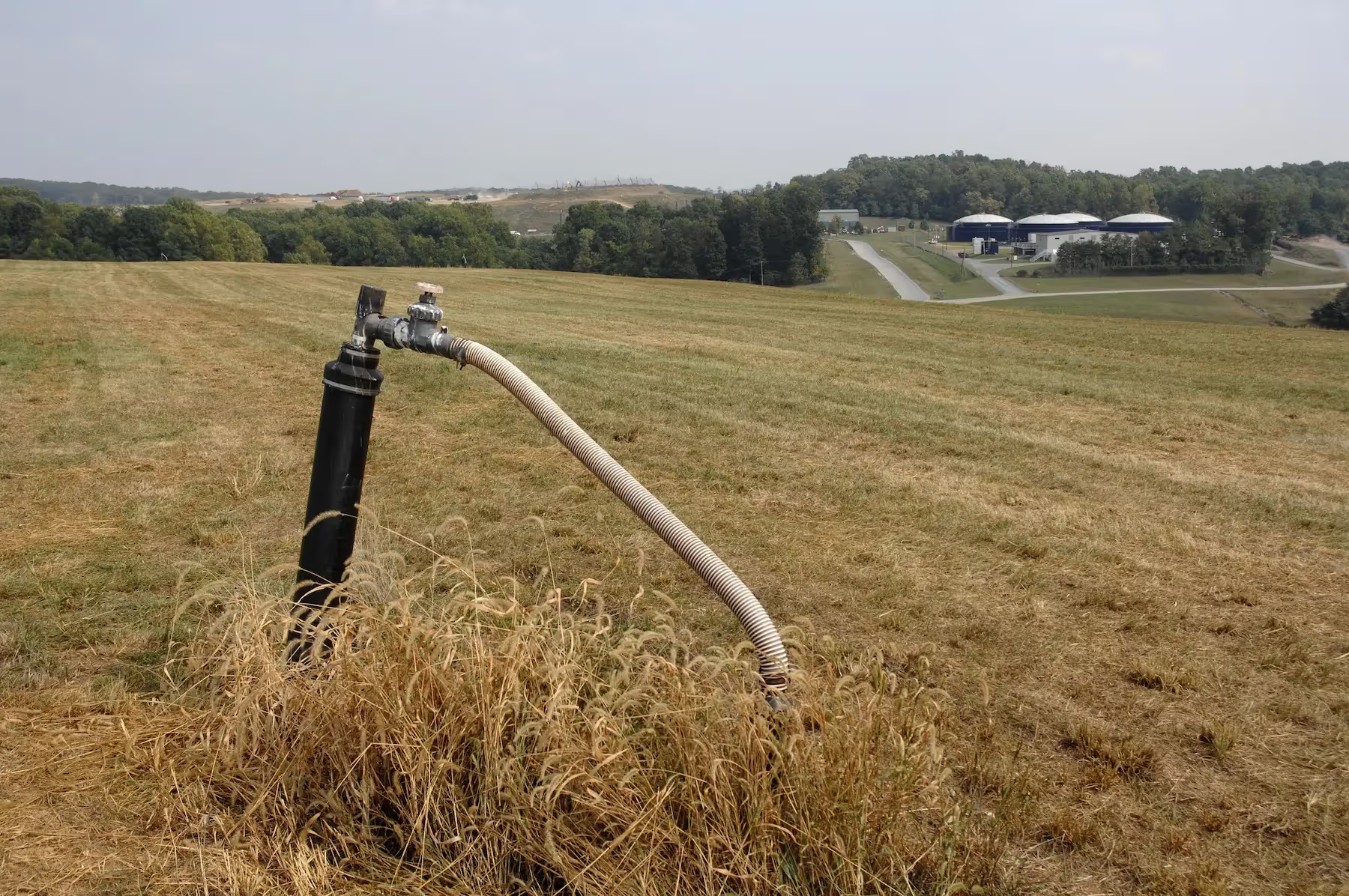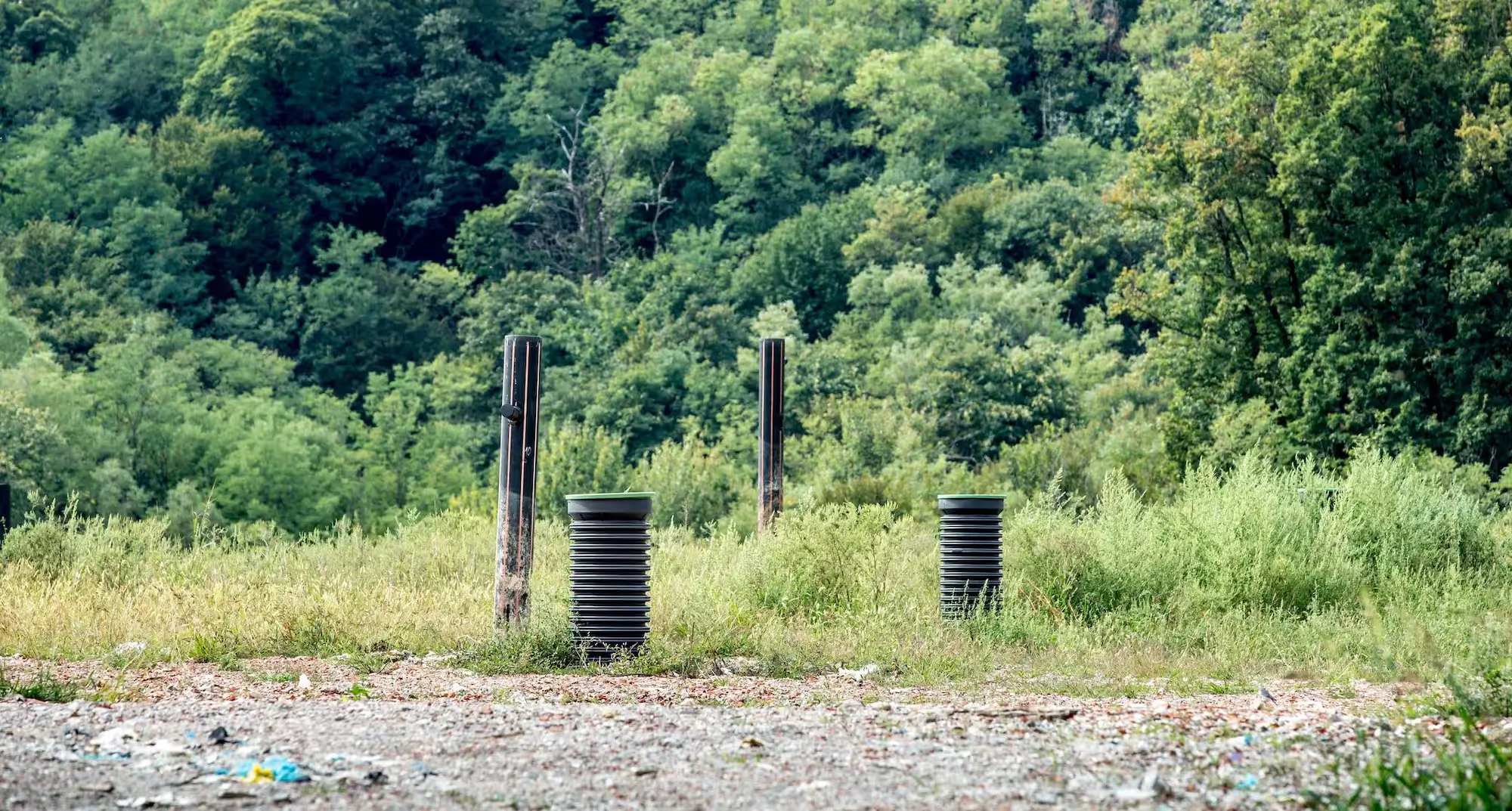Landfill gas capture
.avif)


.avif)


.avif)


.avif)


What you need to know about Landfill Gas
- 1Landfill gas is the byproduct of decomposing organic material in landfill sites.
- 2It consists of about 50% methane emissions and 50% CO2, and is the third-largest source of methane emissions in the United States — a gas many times more potent than CO2.
- 3If it isn’t collected and destroyed, landfill gas is released into the atmosphere to join other climate-altering greenhouse gasses.
- 4Landfill gas projects capture the gasses and either destroy or use them to prevent them from being released.
- 5The captured gas can either be destroyed through combustion or used as an energy source.
.avif)
Methane capture from landfills
Landfill gas is a byproduct of decomposing organic waste in landfills. Bacterial decomposition of organic material as well as the oxidation of solid waste both produce landfill gas, which is emitted into the atmosphere. These landfill gases are made of about 50% methane and 50% CO₂.
While both methane and CO₂ are greenhouse gases that warm the climate, methane gas has a far more potent warming potential. Methane produced from landfills is the third-largest source of methane in the United States, producing 14% of overall methane emissions. That's equal to the CO₂ produced by more than 24 million gasoline-powered cars driven for a year. Since methane is 80 times more potent than CO₂ in its first 20 years in the atmosphere, mitigating it can quickly eliminate a powerful warming agent in the atmosphere.
Carbon credits and landfill gas
Landfill gas projects prevent methane from being released into the atmosphere by capturing it at the site. Then, the methane is either combusted (flared), turning it into a less harmful gas, or converted into energy for electricity or heat. If landfill gas is used to run generators, the heat they give off can also be sold or used on-site.
The techniques used to capture the gas are typically controlled by local or national regulations. Generally, gas collection wells are placed strategically throughout a landfill site to collect gas as it is produced. The gas is drawn from wells into processing stations with blowers or vacuum induction.
Monitoring systems for landfill gas capture, destruction, and use are very precise because the gas is captured and measured directly. The effects on surrounding communities are also positive, as the projects generally improve air quality and lower the chance of health or environmental issues from escaped gas.
Types of landfill gas projects
Landfill gas projects come in two main varieties, each with distinct characteristics and environmental impacts.
Flaring only landfill gas capture
The first type, known as collect and destroy projects or "flaring only" projects, focuses solely on capturing and burning off methane gas. These projects install new or upgraded gas capture systems at waste disposal sites and use combustion to destroy the captured methane. About one-third of all landfill gas projects fall into this category. While their impact is limited to reducing methane generation, they're generally considered to have lower additionality risks since they typically don't generate revenue beyond carbon credits.
Flaring and electricity landfill gas capture
The second type, landfill gas to energy projects (also called "flaring and electricity" projects), takes the process a step further. These projects not only capture and destroy methane but also convert it into usable energy. They can be implemented at both new and existing sites, and their environmental benefit is twofold: they reduce methane emissions while also replacing fossil fuel-based energy. However, because these projects generate revenue from both electricity sales and carbon credits, they require more careful scrutiny to ensure they truly need carbon credit funding to be viable.
Understanding project assessment
The integrity of landfill gas projects relies on a thorough assessment process that examines multiple aspects of each project. This assessment begins by looking at how the project will use the captured gas and what methodology it follows. The choice between flaring only versus generating electricity significantly impacts how the project should be evaluated, as electricity generation introduces additional complexities in terms of calculating emissions reductions and assessing financial viability.
Legal compliance forms another crucial component of the assessment. Projects must be evaluated against the backdrop of existing regulations and incentives in their location. This includes examining whether there are any requirements for landfill gas capture, what kinds of support mechanisms exist (such as feed-in tariffs or tax credits), and whether there are any grants or technical assistance programs that might influence the project's viability without carbon credit funding.
For projects that generate electricity, financial additionality becomes particularly important. This involves analyzing whether the project truly needs carbon credit revenue to be viable. The assessment looks at factors like the project's scale, its location (particularly whether it's in a developing country), and what percentage of its total revenue comes from carbon credits versus electricity sales. This helps ensure that carbon credits are supporting projects that wouldn't happen otherwise, rather than simply providing additional revenue to already profitable ventures.
Technical aspects of implementation
When implementing landfill gas projects, several technical considerations play crucial roles in determining their effectiveness and environmental impact. One key factor is the oxidation of methane as it passes through topsoil. When landfills aren't covered by a synthetic layer, methane traveling through the topsoil gets partially converted to carbon dioxide by microorganisms. This natural process affects how much methane would have been released into the atmosphere without the project, and therefore needs to be carefully accounted for in emissions calculations.
The accuracy of electricity generation calculations presents another technical challenge, particularly for projects that feed power into the grid. These projects must carefully measure how much grid electricity they're displacing and calculate the emissions impact of that displacement. This requires understanding the emissions intensity of the local electricity grid and using conservative estimates to ensure environmental integrity.
The scale and location of a project also influence its technical implementation. Small-scale projects, typically defined as those under 15 megawatts, often face different challenges than larger installations. When these projects are located in Least Developed Countries, they frequently encounter additional hurdles in accessing financing and technical expertise. However, these challenges can actually strengthen a project's case for carbon credit funding, as they demonstrate a clear need for additional support to overcome implementation barriers.
The complexities of additionality
Additionality remains one of the most crucial and complex aspects of landfill gas projects in the carbon market. For a project to be considered additional, it must demonstrate that it wouldn't have happened without carbon credit funding. This concept becomes particularly nuanced in the context of landfill gas projects due to their varying revenue streams and regulatory contexts.
Financial additionality looks different depending on the project type. For flaring-only projects, the case for additionality is often clearer since they typically don't generate revenue beyond carbon credits. However, projects that generate electricity must undergo more rigorous scrutiny. Current best practices suggest that carbon credits should represent at least 25% of a project's total revenue for it to be considered financially additional. This threshold helps ensure that carbon credit funding plays a meaningful role in making the project viable, rather than just providing a minor boost to an already profitable venture.
The regulatory environment heavily influences additionality considerations. In locations where landfill gas capture is mandatory, projects face a much higher bar to prove additionality. They must demonstrate that they go beyond regulatory requirements in some meaningful way. Similarly, the presence of various incentives like tax breaks, grants, or technical assistance programs can affect a project's additionality case. A comprehensive evaluation must consider how these different support mechanisms interact and whether they would be sufficient to make the project viable without carbon credit revenue.
History and global distribution
Energy projects using landfill gas first appeared in the 1970s and increased during the 1990s. The U.S. Environmental Protection Agency established a voluntary program in 1994 that built partnerships between energy providers, the landfill gas industry, and communities. Today, there are hundreds of operational projects in the United States.
Most landfill gas projects are in the United States, where 120 are registered, followed by China, Brazil, and Turkey. Despite their long history, landfill gas credits are still relatively new in the carbon market landscape.
Ensuring accurate emissions calculations
The accuracy of emissions calculations in landfill gas projects depends on several key factors. One crucial element is the Global Warming Potential (GWP) value used for methane. The Intergovernmental Panel on Climate Change (IPCC) periodically updates these values as scientific understanding improves. Currently, methane is considered to have 28 times the warming impact of CO₂ over a 100-year period. Projects need to use these updated values to ensure their emissions reductions are calculated accurately.
Grid emission factors present another critical calculation challenge for electricity-generating projects. These factors must accurately reflect the emissions intensity of the local electricity grid that the project is displacing. As grid compositions change over time, often becoming cleaner as more renewable energy is added, these calculations need regular updates to remain accurate. Using conservative estimates and obtaining third-party verification helps ensure the environmental integrity of these calculations.
Future outlook and opportunities
Capturing landfill gas continues to present significant opportunities for emissions reduction while providing potential energy benefits. As technology improves and monitoring becomes more precise, these projects can play an increasingly important role in both waste management and climate change mitigation strategies.
The evolution of carbon markets and increasing focus on methane reduction suggest a growing role for landfill gas projects, particularly in developing countries where waste management infrastructure is still developing. However, maintaining high standards for additionality and accurate emissions calculations will remain crucial for ensuring these projects deliver real environmental benefits.


.avif)
.avif)
Landfills generate a large portion of human-made methane, and avoiding or mitigating these emissions at the source directly reduces an extremely powerful greenhouse gas.
Projects that capture and eliminate this gas also eliminate pollutants in the surrounding communities. Landfill gas other than methane can cause health issues through exposure.
Flaring and electricity projects also use captured methane as renewable energy. This not only avoids methane in the atmosphere, but it also lowers the use of fossil fuels.
There is a chance that a project might cause participants to oppose legislation or regulation that would achieve the same thing as the project because it would impact carbon credit finances.
If landfill gas becomes financially rewarding in projects that create energy, there might be less incentive to also reduce waste in general. It could lead to decreased efforts to divert waste into other streams, like compost.
Landfill gas may become explosive if methane forms an explosive mixture with air in an enclosed space without proper ventilation. This is not a common occurrence, though.
Want to accelerate climate solutions like landfill gas capture? We want to hear from you.



